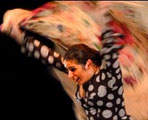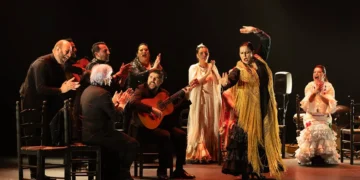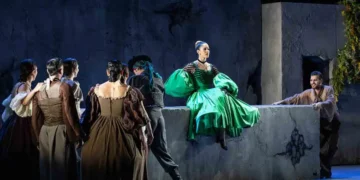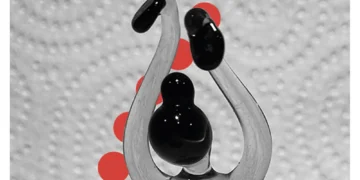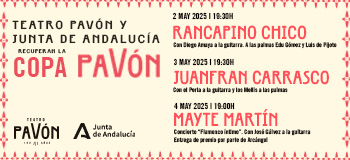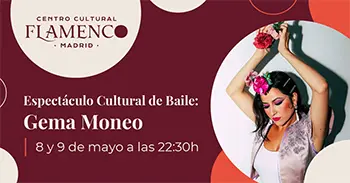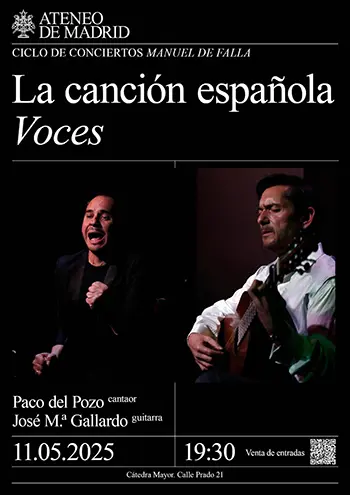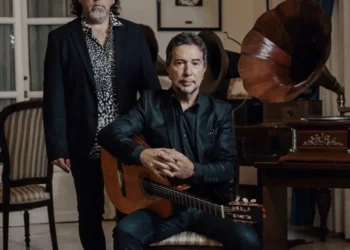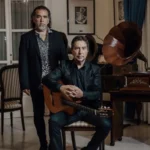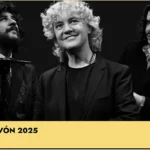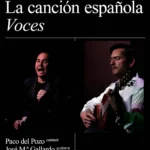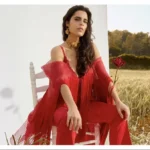|
SPECIAL REPORT |
||||||||||||
|
Text and photos: Estela Zatania Andalusia in USA The longest-running flamenco festival held outside Spain has just celebrated its twenty-fifth anniversary. Flamenco is globalizing. If you don’t need to be Italian to sing opera, or Russian to dance classic ballet, flamenco is no longer limited to Spaniards, much less Andalusians or any particular race. An art-form this vast and rich does not understand frontiers. The visionary Eva Encinias Sandoval already knew this in 1987 when the College of Fine Arts of the University of New Mexico asked her to organize an event to commemorate the 50th anniversary of the institution. And thus, in the intense dry heat of the desert, and with a clear vocation not only to educate, but to become a regular event, was born the Festival Flamenco Internacional de Albuquerque. In addition to the Festival, the National Institute of Flamenco founded by Encinias administers a flamenco conservatory, a flamenco immersion summer camp for children, a public high-school with intensive flamenco training included in the curriculum and three dance companies. In 1976 the dance and theater department of the University of New Mexico founded the first officially recognized degree program in flamenco studies three decades before the University of Seville established a similar program. These people take their flamenco seriously – no wonder Albuquerque has been called “the Seville of North America”.
For this edition, approximately 400 people participated in a complete program of dance, guitar, singing and percussion workshops, and a series of conferences opened a week of top-notch shows. Throughout the Festival, any day of the week, the hallways of the National Hispanic Cultural Center were abuzz with students of all ages and origins, and the continuous sounds of footwork or cajón, a voice feeling out a soleá, the roll of castanets or whip-crack handclaps. A blessed organized confusion that was reminiscent of the heyday of the original Amor de Dios studios in Madrid in the 1970s. After a weekend of conferences by guest speakers such as Faustino Núñez, Estela Zatania, William Washabaugh, Meira Goldberg and Teo Morca among others, the program of shows, centerpiece of the Festival, got underway. This year, more than 30 performers brought from Spain participated in four top dance companies, and the program also included the fine resident company of the Festival organization. On Sunday June 10th, brother and sister Adela and Rafael Campallo inaugurated the series of gala shows with their work “Caudales” at the Rodey theater, a comfortable venue with the feel of a large café cantante. With a complete program that included zapateado, siguiriya, taranto, fandangos, soleá and siguiriyas, with the voices of José Valencia and Jesús Corbacho, the guitars of Juan Campallo, brother of the two dancers, and David Vargas, in addition to José Carrasco on cajón, the audience was thoroughly taken with the group’s polished performance. Adela works the compás with her feet reaching a very high technical level, and Rafael, as always, delivers the compact masculine style of his illustrious teacher Manolo Marín,. On Monday the 11th, it was Alfonso Losa’s turn. A winner of the important Córdoba and La Unión prizes, he too is a virtuoso of footwork with surprising percussive combinations, showing a strong influence from the Farruco school. Two singers from Jerez rounded out the group, Manuel Tañé and Juan Carrasco “Juañares”. Fandangos, siguiriya and martinete, farruca, alegrías and soleá were interpreted with the guitar accompaniment of Paco Cruz and Paco Heredia, with the participation of two stylized dancers, Vanesa Coloma and Tamar González.
The following day in the same theater, Cordoban Olga Pericet presented her work “Rosa, Metal y Ceniza”. This year the diminutive dancer is achieving the success she has sought for so many years. The audience was enthralled with her dream-like style based on the most classic flamenco dance, with an intelligent mixture of risk and tradition. Cádiz dancer Jesús Fernández delighted us all with a style all his own, and the show was brilliantly backed up by the powerful voices of José Valencia and Miguel Ortega, and the guitars of Antonia Jiménez and Javier Patino. On Wednesday night, the stage of the spacious theater of the National Hispanic Cultural Center received the production “The Spanish Room” of the American Flamenco Repertory Company “Yjastros”, under the artistic direction of Joaquín Encinias with first dancer Marisol Encinias, son and daughter respectively of Eva Encinias who directs the Festival. The numerous company offered a high-quality show and a kind of flamenco that was both traditional and refreshing, and a certain American feeling in the best sense of the word. If Marisol is expressive and intense, Joaquín is a powerful dancer with a personality all his own, and all the contained fury that weds so well with flamenco. José Valle “Chuscales”, a guitarist from Antequera who settled in New Mexico years ago, led the backup composed of Calvin Hazen and Ricardo Anglada on guitar, José Fernández and Vicente Griego on vocals with Héctor Aguilar managing the percussion. Thursday, Pastora Galván, now a top star of flamenco dance having overcome being the “daughter of” and “sister of” (José Galván and Israel Galván respectively), while at the same time basing her work on the wisdom received from both, delighted the audience with the excellent help of singers José Valencia and Cristián Guerrero, the admirable guitar-playing of veteran Ramón Amador and the inimitable incorrigible Bobote adding palmas and dance. Pastora has the ability to recreate traditional forms of Triana-style dance while at the same time adding the aroma of today and of her personality influenced by Israel, without appearing to mimic him. Friday and Saturday nights there was a lengthy closing show with the participation of all the artists, and this corner of the American southwest ended the week having offered the cutting-edge of flamenco dance as presented by some of the best artists from Spain. |



